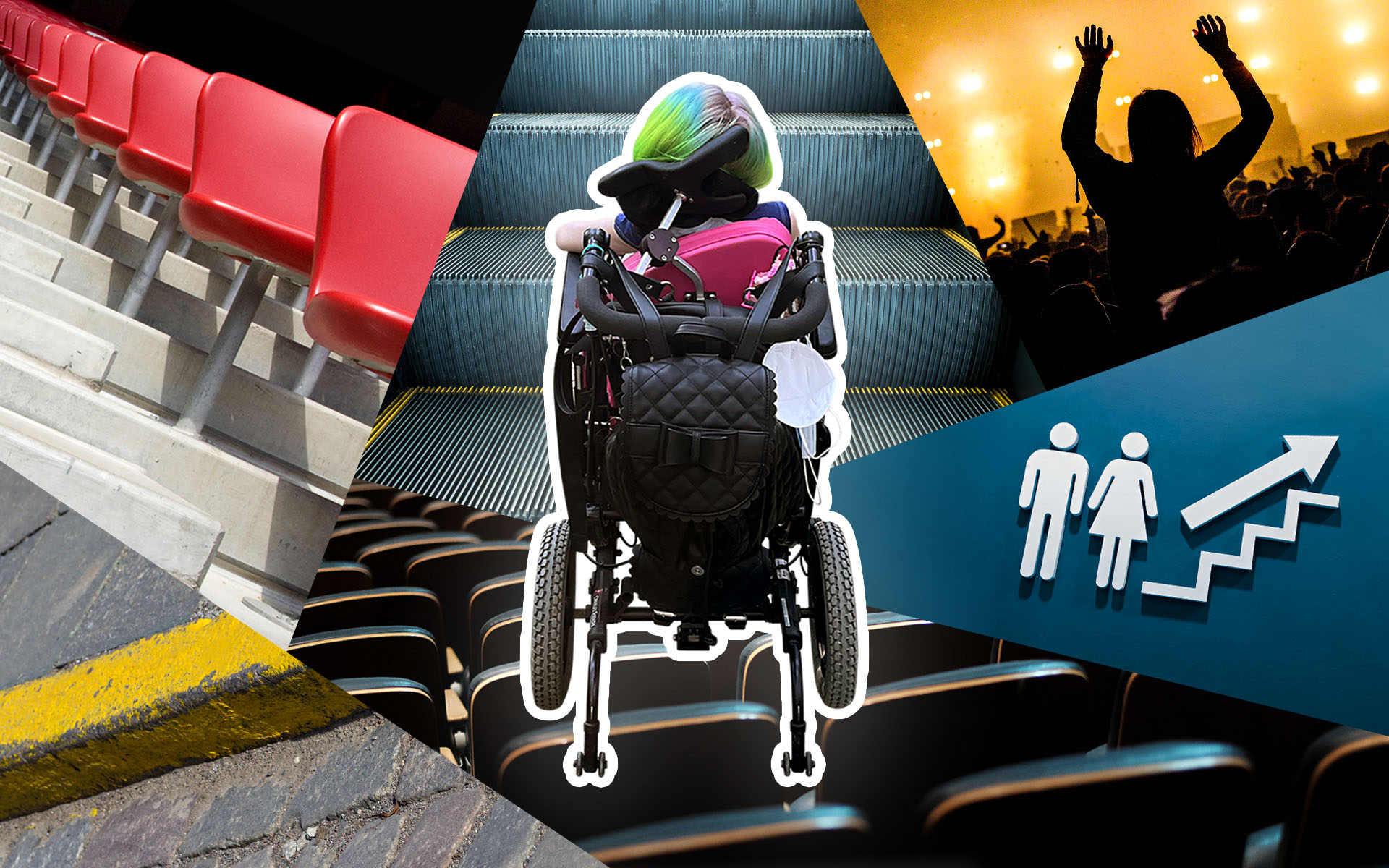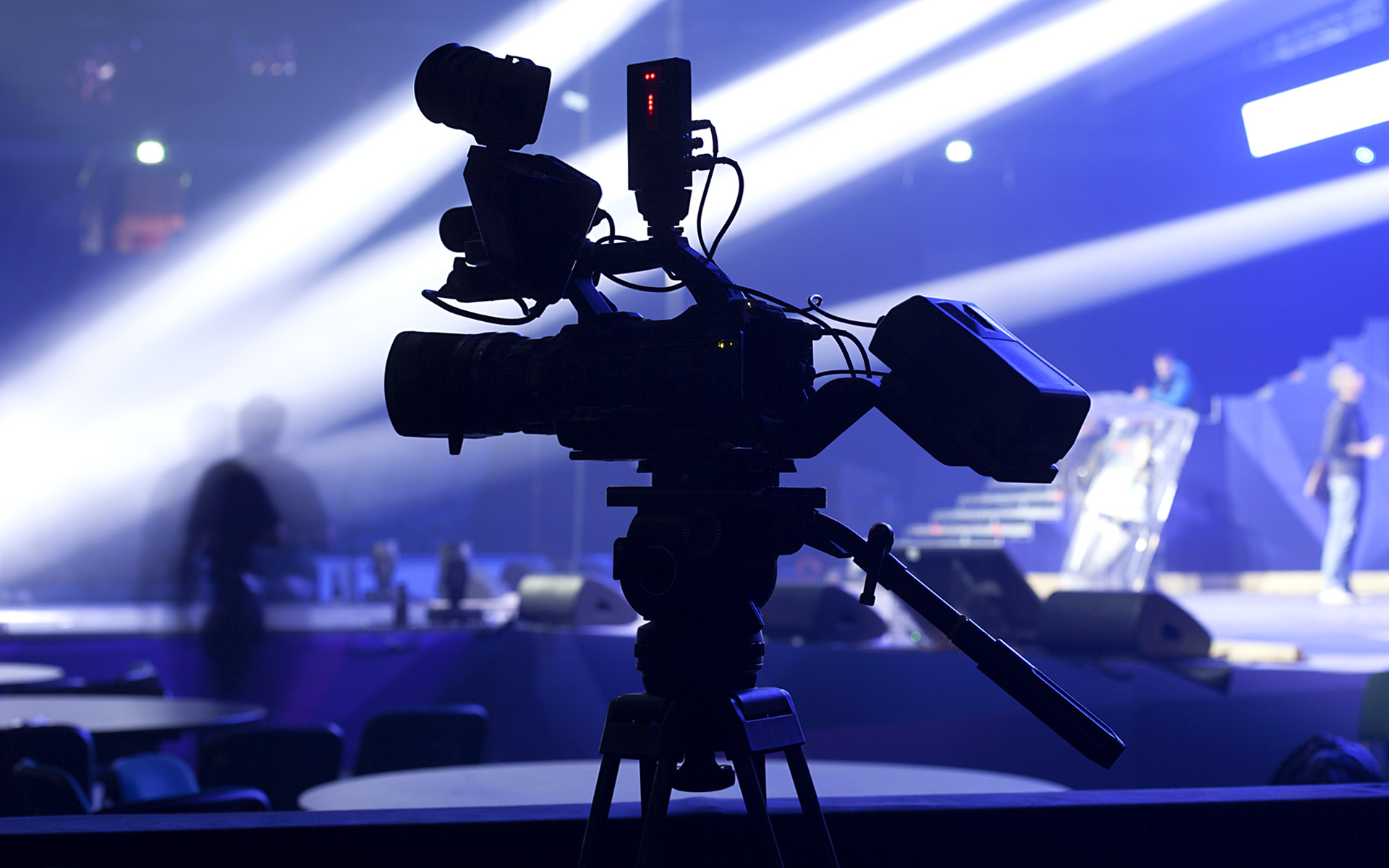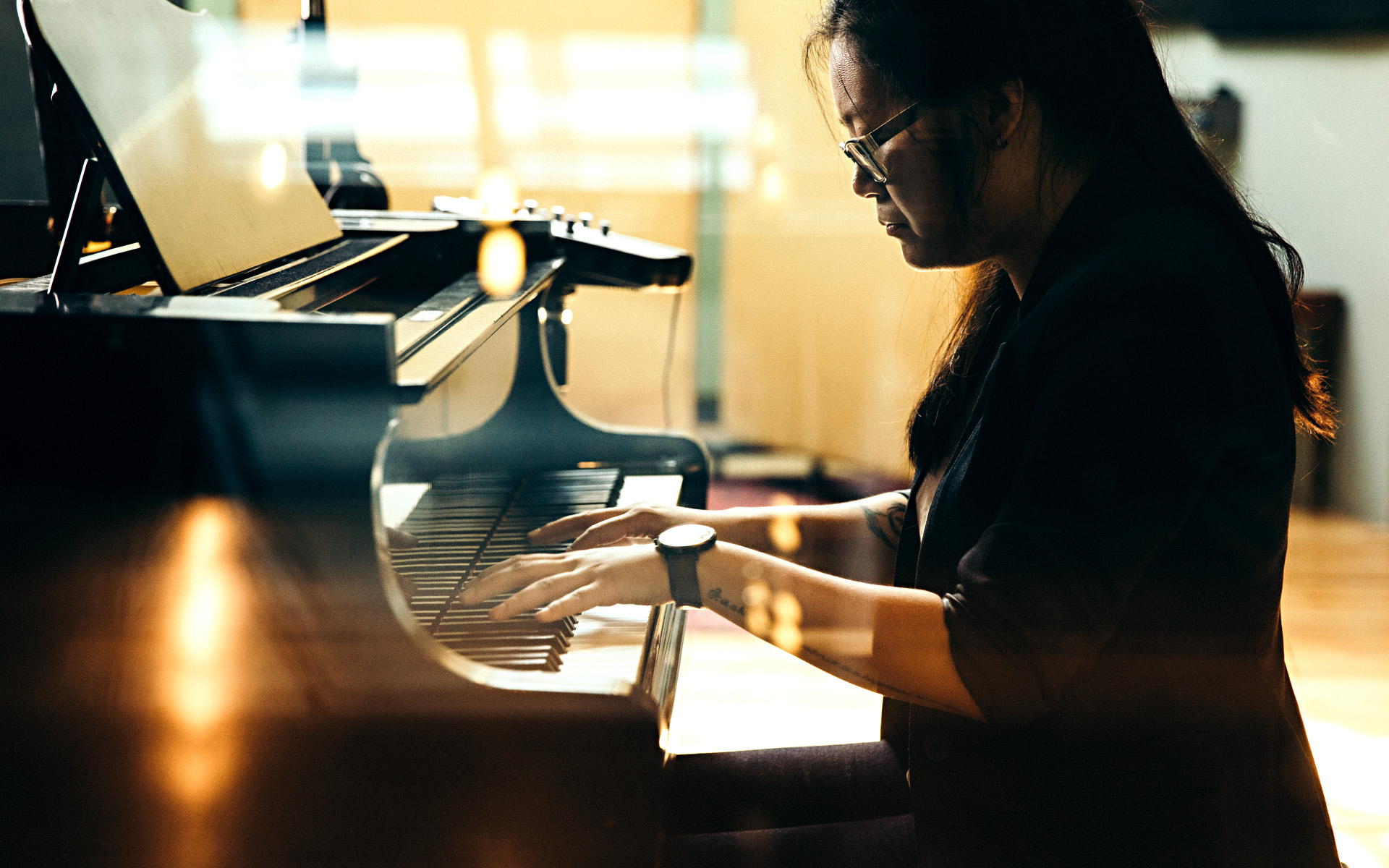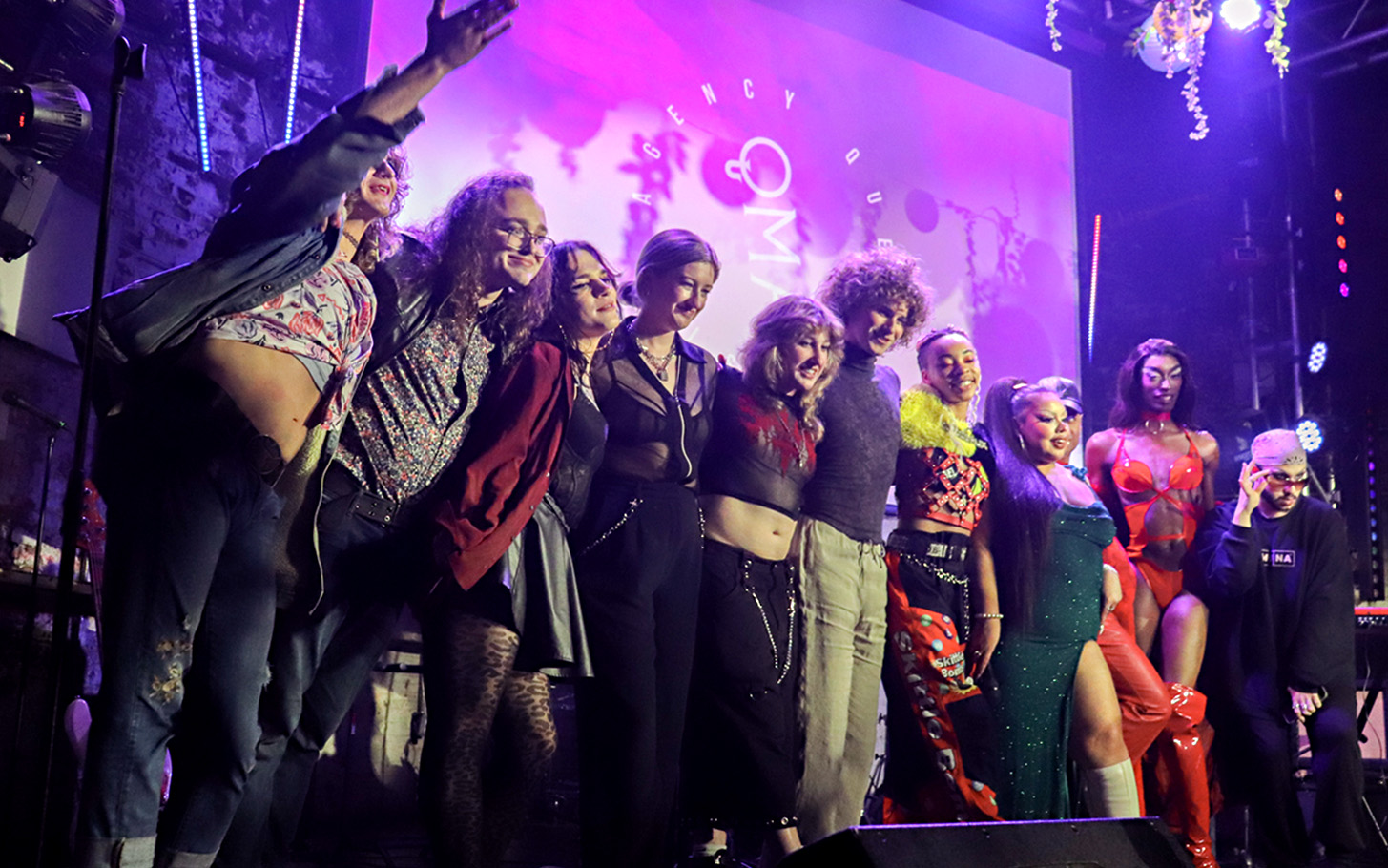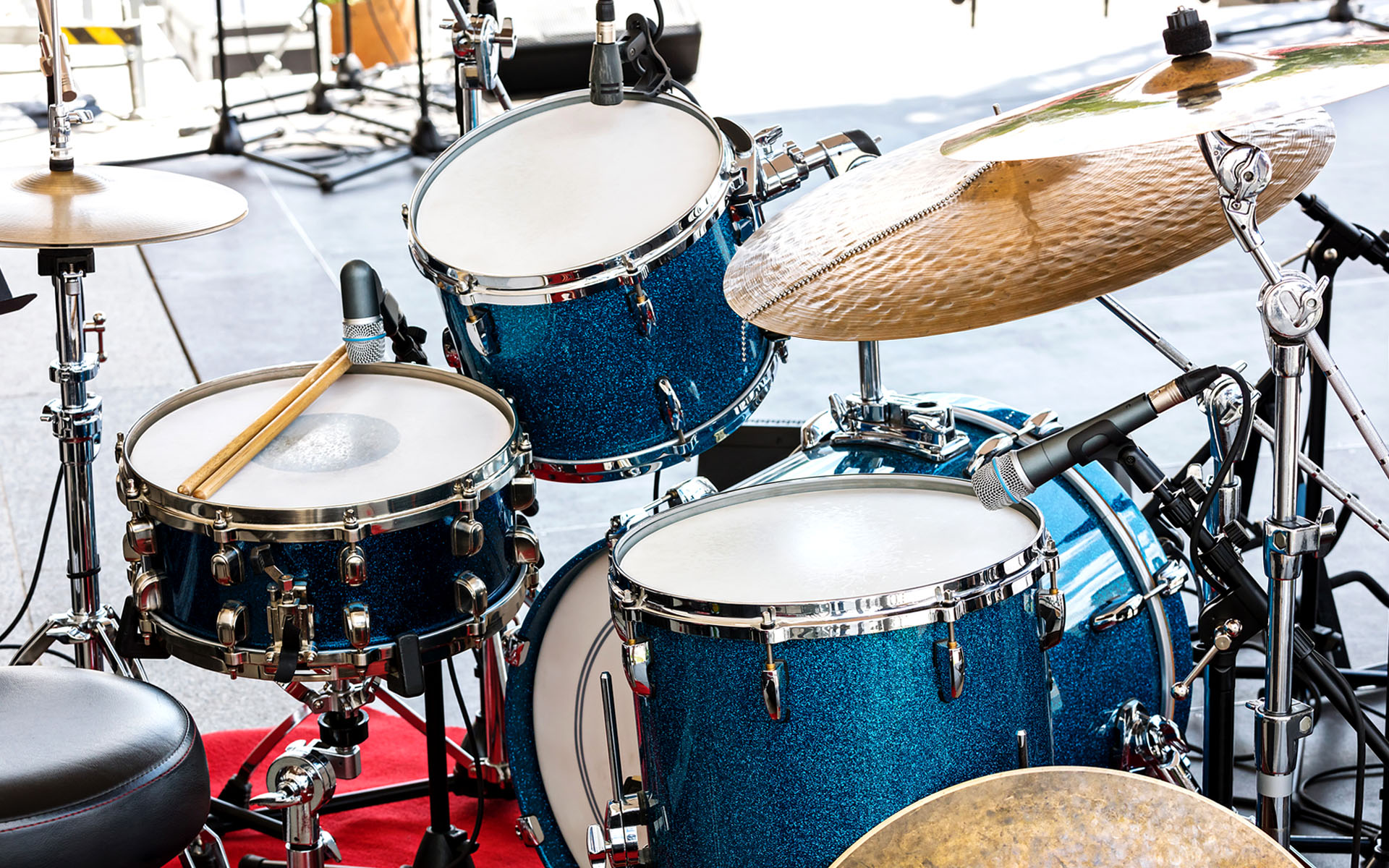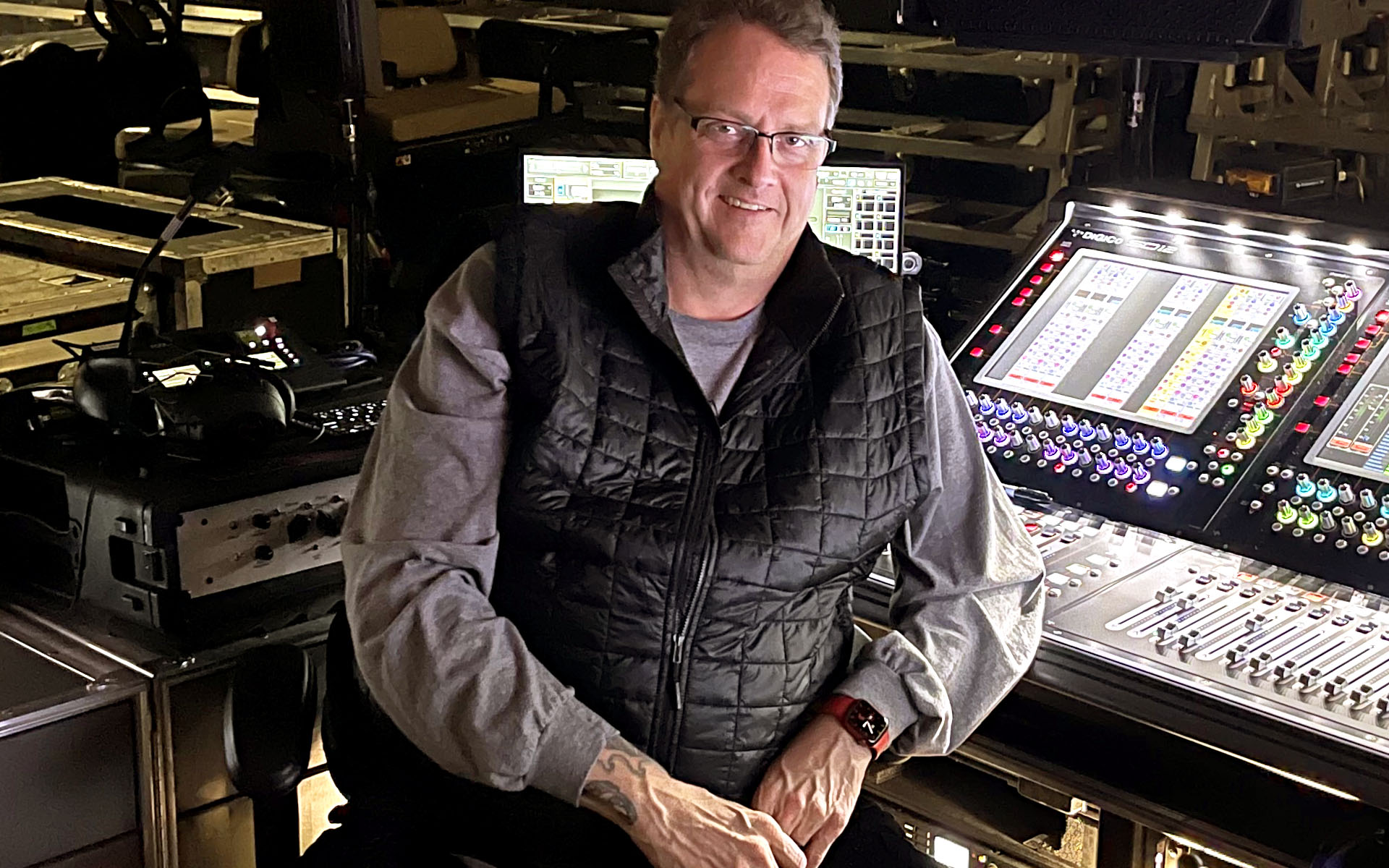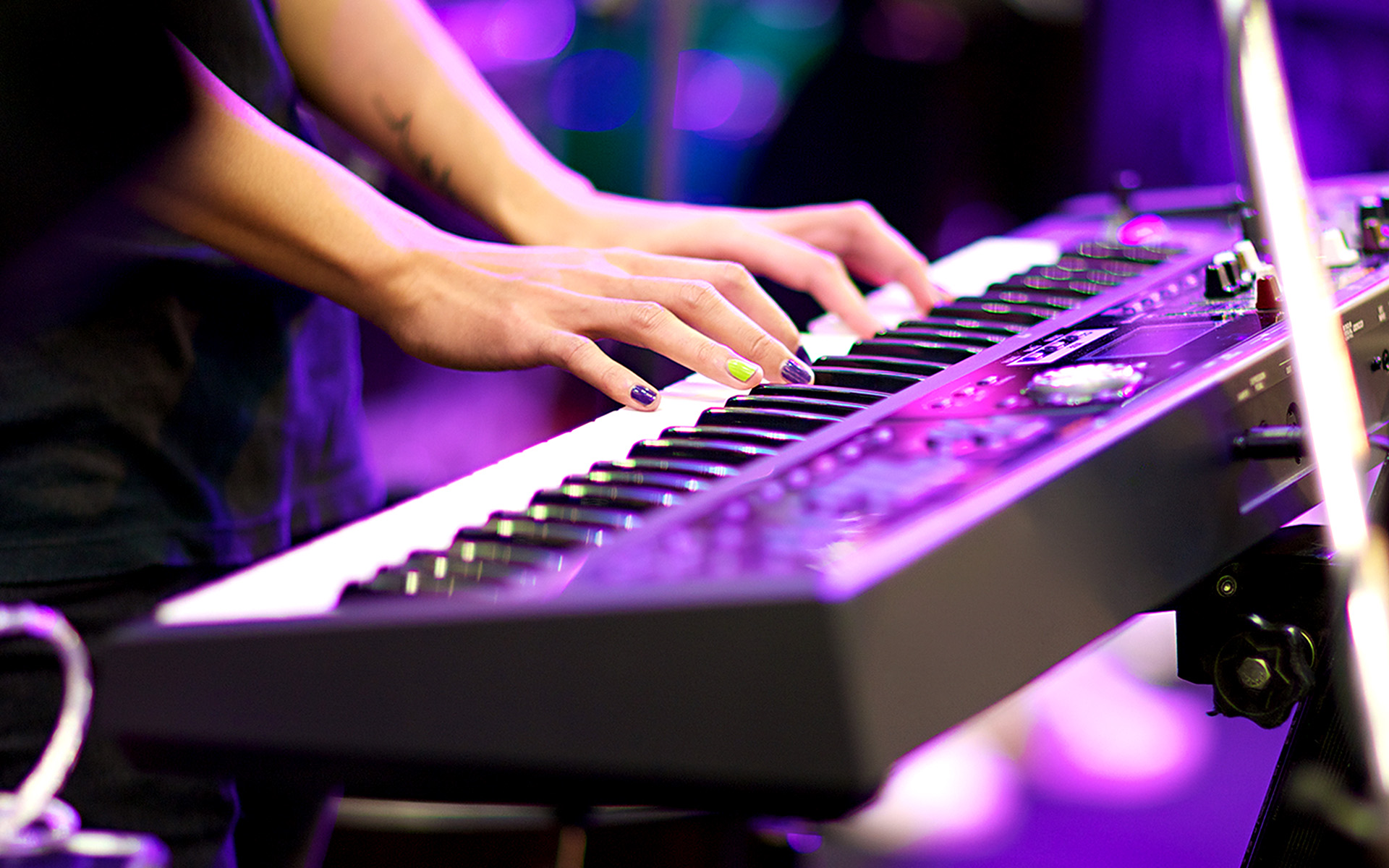In my youth, while some were practicing sports and others were skateboarding, I was rocking and rolling (emphasis on rolling) at as many live shows as I could feasibly attend.
As a mobility-disabled kid surrounded by peers with predominantly physical hobbies, I gravitated towards music as my chosen extracurricular early in life—and with a fiery passion. I spent much of my childhood playing my favorite albums on repeat. Music was there for me throughout all my eras of development… from Spice Girls to Sum 41 to Say Anything to Sublime.
I attended my first gig quite young. I’d won a contest for all-access passes and was over the moon to go. I still get equally pumped about going to shows—no matter the scale of the event. Once I’d gotten my first taste of live music, I knew it was the type of atmosphere and adrenaline rush I’d want to keep chasing. But there was one glaring problem that I hadn’t yet realized was so prevalent: inaccessibility in the live music scene.
Note: In this piece, I’ll be focusing on basic accessibility for fellow mobility-aid users. This is a much broader issue with a lot of ground to cover—like why COVID protections remain necessary and how it directly relates to disability justice—and I’m only able to scratch the surface in this article.
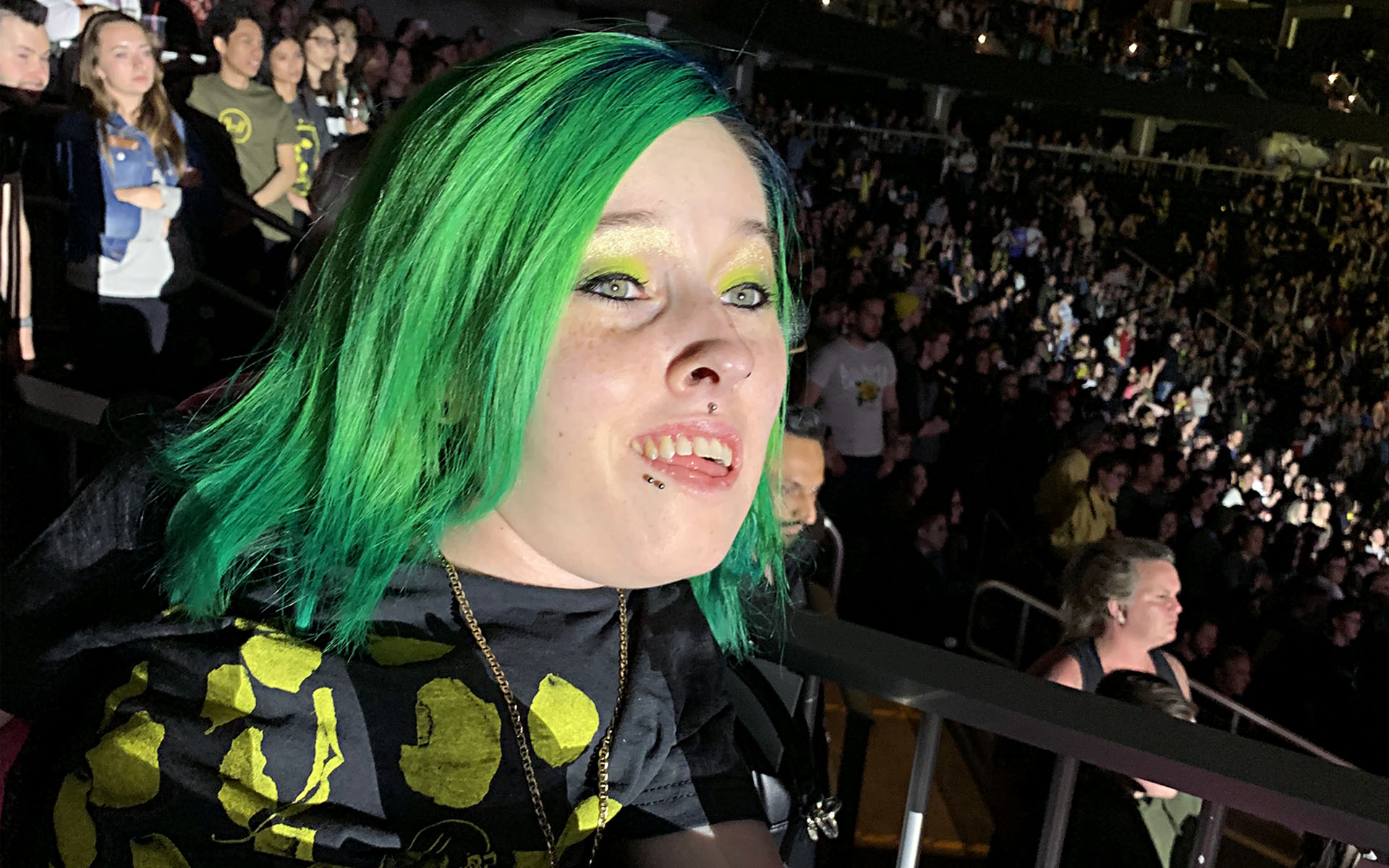
Accessibility Responsibility
There are countless moving parts and people behind live music. As I quickly learned after attending more shows, both backstage and front of house, it also means the responsibility of making a concert accessible frequently goes unclaimed.
All levels of live music are responsible for facilitating accessible and inclusive environments—venues, ticket vendors, promotors, organizers, performers, crews, attendees, and beyond. To pursue accessibility, each area of focus needs to do their part.
Of course, most people I’ve encountered in the scene over the years have been receptive to improving accessibility in whatever ways they could, based on their role. Many times I have been given VIP treatment by venue staff and crew members who had guestlist privileges, often to compensate for concert inaccessibility. And while I cherish the opportunities I was afforded, accessibility isn’t something that can be gatekept or offered under the guise of special treatment. Further, my experiences were uncommon, leaving the majority of Disabled fans behind.
Venues Need to Ramp up Accessibility (Literally!)
I’ve been to many gigs in many cities as a full-time wheelchair user and experience tells me venues hold the most power to make or break accessibility. My first barrier typically comes in the form of stairs, inside and outside venues.
“Just” a few steps to get in? Inaccessible.
Back entrance with an arduous journey to reach the FOH? Inaccessible.
Washrooms on a different floor, but no elevator? Inaccessible.
(You get the idea. Half-measures simply aren’t enough.)
I’ll never forget my first club show experience: Marky Ramone was playing a DJ set in my area. The venue was far from accessible, so I decided to try meeting him outside for a quick photo instead. Disappointed by the venue’s inaccessibility, he rounded up the bouncers and got them to lift my wheelchair up a flight of stairs so I could attend. I look back on this adventure fondly and appreciate the associated badassery, but even so, it was the result of inaccessibility.
I understand this may, in part, be because venues are making the best of dated architecture. But they’re equipped to haul heavy music gear in and out every night—basic accessibility should be a breeze in comparison. Disabled musicians, venue employees, and crew members also exist so it impacts more than just fans who are spending money on tickets.
Venues might also qualify for a grant to assist with improving accessibility, depending on their location.
Set the Stage
When I was a teenager, My Chemical Romance—my favorite band at the time—announced they were coming to a nearby city on an arena tour. I frantically looked up the floor plan, only to discover the alleged accessible seating was behind the stage—and not in a backstage pass kind of way. I was devastated.
The band later added a date closer to me. It was my first arena concert. To my dismay, the row in front of mine was too close so I couldn’t see past able-bodied attendees as they stood for the entire show. And the floor wasn’t an option.
Fortunately, this story has a happy ending (sort of): A local radio station had been “granting wishes,” so I wrote them a letter and actually got to meet the band afterwards.
This experience of being let down by venue floor plans isn’t isolated. Poor sight lines became a recurring theme for both general admission and reserved seating shows.
I began actively avoiding arenas and watching most sets from beside the stage, or onstage if I was lucky. Otherwise I’d be forced to stare at attendee tush all night. While it was exhilarating to watch sets alongside crews, it meant sacrificing acoustics and sometimes left me feeling segregated from the crowd.
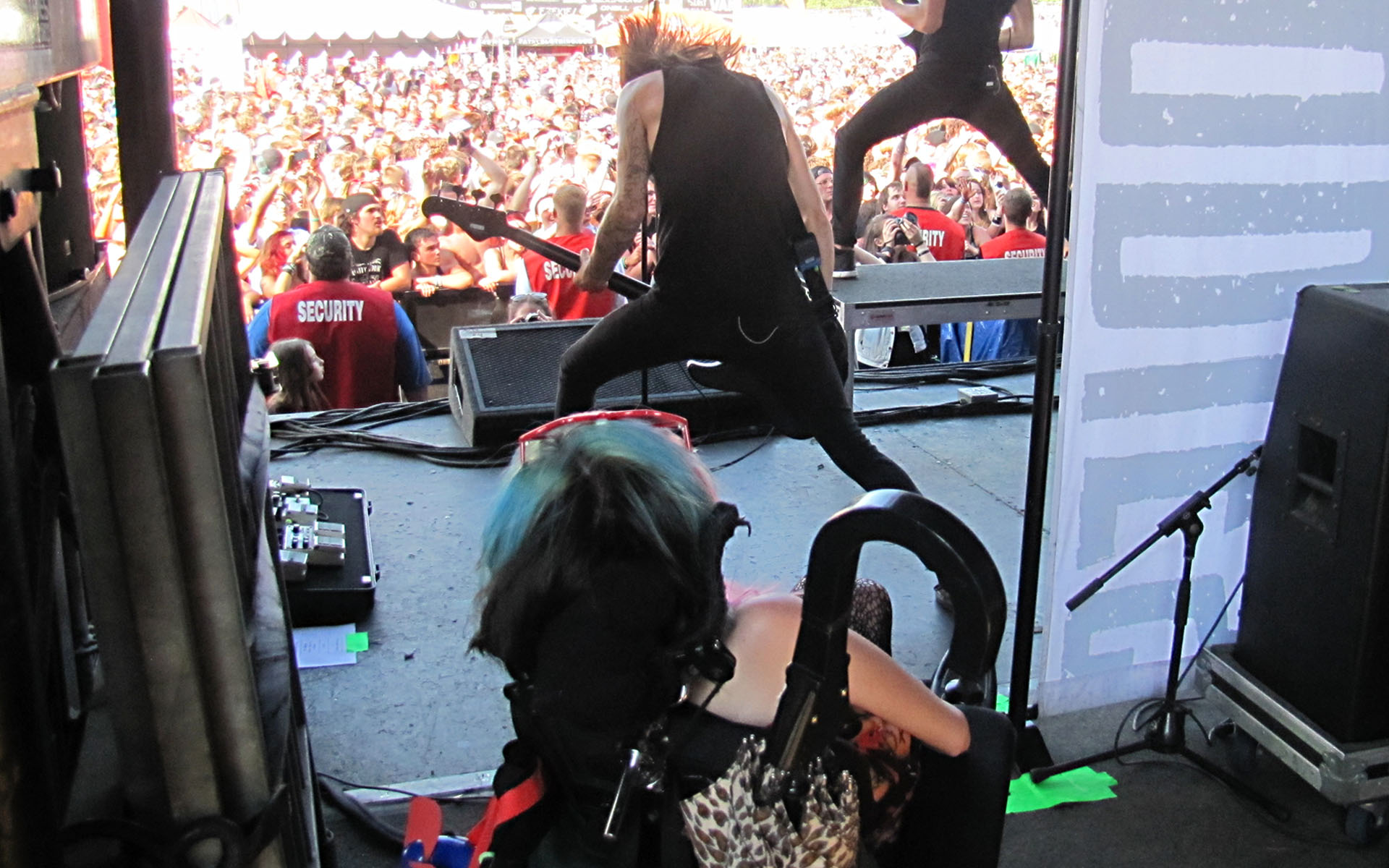
But I’ve also attended gigs where accessible seating is done right, so I know it’s possible.
Raised platforms with ramp access amidst the crowd. Auditoriums and arenas with accessible options from multiple vantage points done with thoughtful consideration.
For fans of live music, most venues can offer limited spaces in front of the barricade as a simple, reasonable, and safe option for diehards looking for a front-row experience. And where possible, they should provide various accessible seating areas so folks have a choice in their proximity to the stage.
Upcharging Accessibility
Cost is a barrier for many people wanting to attend concerts, but it’s often magnified for Disabled people. For instance, reserved accessible seating is generally more expensive. And for many of us, a care attendant must accompany us—effectively doubling our cost just to get through the door, and further excluding us from the joys of live music.
I’m not suggesting productions shouldn’t be profitable, but rather that it needn’t come at the literal expense of patrons with access needs.
The Future of Live Music
I’ve long dreamt of overhauling the way accessibility in live music is approached. It’s not only possible, but necessary. And I firmly believe that, with collective effort, it could become one of the most accessible and rewarding forms of entertainment.
Looking ahead, I encourage folks to use their respective positions and platforms to promote accessibility and create welcoming spaces.
Hire Disabled consultants with live music experience and modify venues accordingly.
Make small yet significant improvements, such as making water more accessible to patrons or offering both low and high tables. I left many gigs nearing dehydration because water was either out of reach due to poor placement of vendors, too costly, or venues forbade attendees from bringing their own.
Offer viable options for high-risk people, those with sensory-related disabilities, and others who struggle to attend most large-scale events. This can be achieved through things like continued COVID protections, acoustic sets and intimate live music experiences, or livestreams.
Immerse Disabled people in live music communities by involving us at every level, alongside non-disabled people. Ensure venues are equipped to give us the same freedom to roam as our peers so we can enjoy live music amongst the crowd or work behind-the-scenes.
Make detailed accessibility information available online.
Remove barriers and prioritize access. Accessibility for Disabled people must be more than an afterthought.
The show must go on—with everyone.
About Karli Drew
Karli Drew is a vibrant-haired writer, creator, and consultant. As a feisty Disabled person, her motto is “more activism, less ableism.” When she’s not fighting injustices, you can find her and her bold style at a show, rambling about her special interests, and/or making tasteful jokes about her disabilities.





